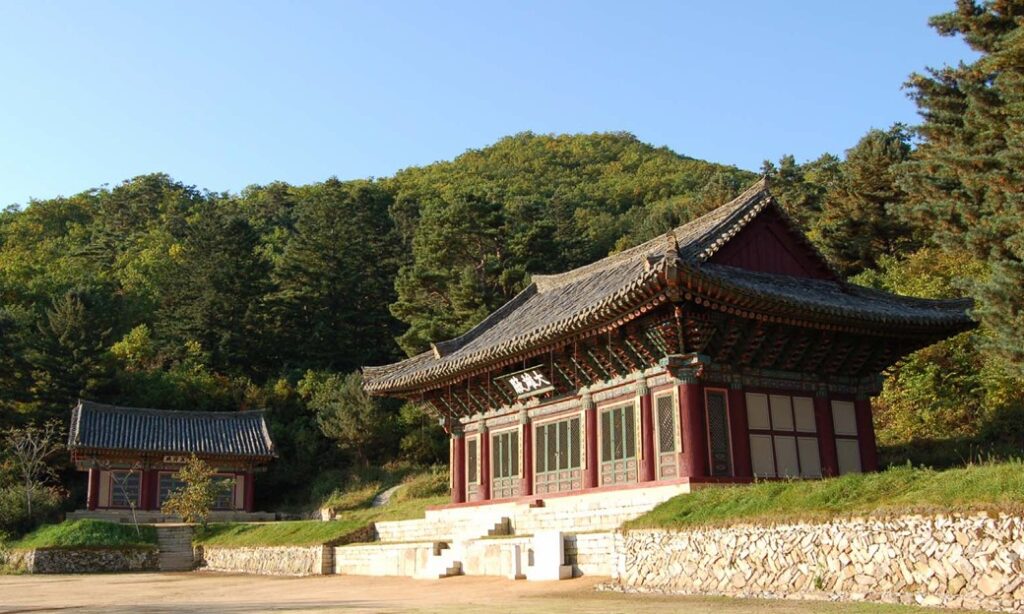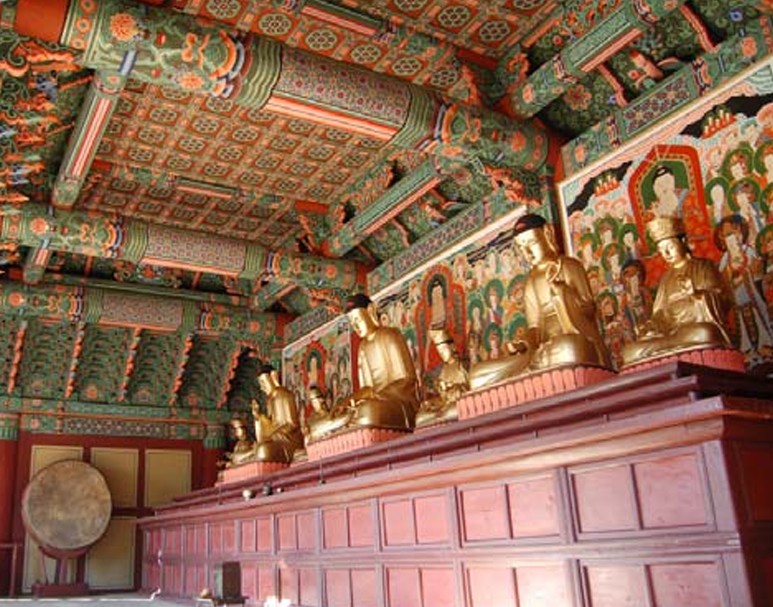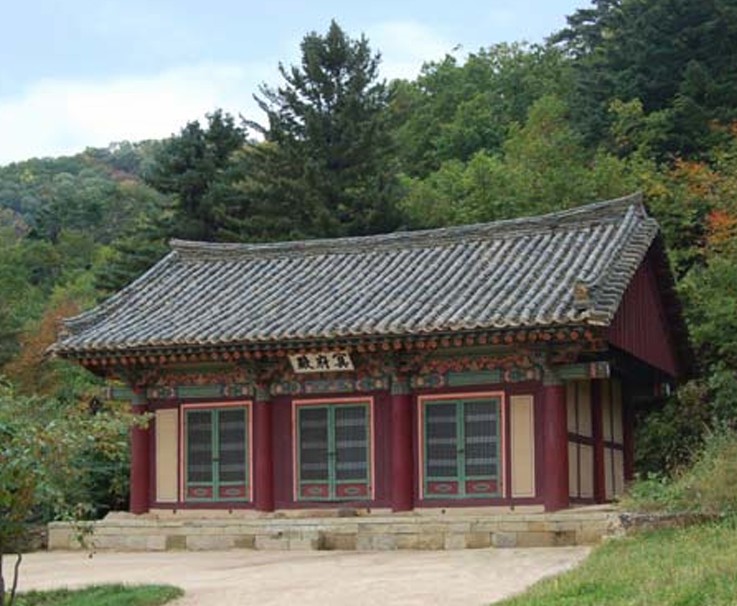Jonggwangsa Temple, located in South Hamgyong Province after being reconstructed in 1679, has undergone several rounds of preservation and maintenance throughout the centuries. Today, it remains a significant testament to traditional Korean temple architecture.
Currently, three main structures survive at Jonggwangsa: the Daeungjon Hall (Main Hall), Myeongbujon Hall, and Muryangsugak Pavilion. However, historical records suggest that the temple once housed more than ten buildings, including the now-lost Chilsonggak (Hall of the Seven Stars) and others.
The Daeungjon Hall is particularly notable for its solid and intricate wooden structure. The beams and structural elements interlock with remarkable precision, reflecting both architectural strength and craftsmanship. The pillars are especially striking—they are all impressively thick, with the four corner columns built even thicker and taller than the rest. This was not merely for visual effect; it was a sophisticated architectural technique to ensure the building’s stability and harmonious form.
The ornamental carvings within Daeungjon are exquisitely detailed. Noteworthy masterpieces include dragon-head sculptures placed on the corner brackets, beautifully carved rafter ends (called lachi), and a variety of intricate hwa-ban (floral panel) carvings under the cross-beams inside the building. These elements showcase the exceptional woodcarving skills of Korean artisans from the era.
The building’s roof is a hip-and-gable style (합각지붕), composed of gently curved lines that gracefully blend with the surrounding green forest. This design not only reinforces the visual harmony with nature but also emphasises the unique aesthetic sensibilities of Korean architecture. The flowing curves of the ridge, gable, and eaves embody a strong sense of national sentiment and cultural identity.
Inside Daeungjon, a Buddha altar approximately two meters high holds several Buddha statues, forming the spiritual heart of the temple.
Jonggwangsa stands today as a representative architectural heritage of the mid-Joson Dynasty. It serves as a valuable cultural resource, offering insight into the heights of traditional Korean construction and design techniques.



